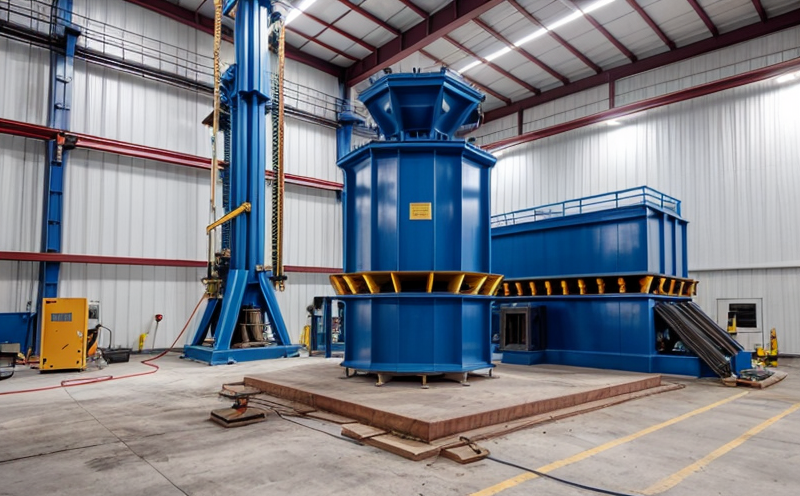ISO 7626-10 Multi-Point Modal Analysis of Structures
The ISO 7626 series provides a comprehensive framework for modal analysis, which is crucial in understanding the dynamic behavior of structures. The specific focus here is on Multi-Point Modal Analysis (MPMA), as defined by ISO 7626-10. This method enables precise identification and characterization of structural modes under various loading conditions, ensuring robustness and reliability across diverse industries.
The primary goal of MPMA is to determine the eigenfrequencies, mode shapes, and damping ratios of structures subjected to external excitations. This technique is particularly useful in sectors like aerospace, automotive, and civil engineering where minimizing noise, vibration, and harshness (NVH) is paramount for performance optimization.
MPMA involves multiple sensor placements that simultaneously record displacement data at different points on the structure under excitation. These recordings are then processed to extract modal parameters using advanced signal processing algorithms. The accuracy of this method relies heavily on precise instrumentation, including accelerometers and force transducers, which must be strategically placed based on structural geometry.
The process begins with thorough specimen preparation, ensuring that all surfaces are clean, free from contaminants, and properly aligned. Once prepared, the structure undergoes excitation using controlled mechanical or electrical sources to induce vibrations at various frequencies. The resulting vibration signals are captured by sensors and transferred to a data acquisition system for subsequent analysis.
Key considerations in this process include ensuring that environmental factors such as temperature and humidity do not interfere with sensor readings. Additionally, the choice of excitation method plays a critical role; random or sine sweep methods can provide detailed frequency responses across wide ranges. After acquiring raw data, sophisticated software tools are employed to perform modal analysis.
The output includes eigenfrequencies, mode shapes, and damping ratios that help engineers identify potential issues such as resonance points which could lead to structural fatigue or failure if not addressed early in the design phase. This information is invaluable for improving product designs by identifying areas requiring additional reinforcement or optimization.
Compliance with ISO 7626-10 ensures consistency and reliability across different laboratories, making it easier to compare results internationally—a crucial aspect given global supply chains.
| Excitation Method | Data Collection Points | Mode Shape Identification |
|---|---|---|
| Sine Sweep Excitation | Multipoint Sensors | Advanced Signal Processing Algorithms |
| Random Excitation | Multipoint Sensors | Mode Shape Visualization Software |
The benefits of MPMA extend beyond mere compliance; it offers significant advantages including enhanced structural integrity, improved product performance, and reduced development time. By identifying critical modal parameters early in the design process, manufacturers can avoid costly rework during later stages.
- Enhanced Structural Integrity: Identifying weak points through precise modal analysis helps prevent structural failures.
- Improved Product Performance: Understanding how structures respond under different conditions allows for better design decisions leading to smoother operations and increased lifespan.
- Reduced Development Time: Early detection of issues via MPMA reduces the need for extensive prototyping, thereby speeding up the overall development cycle.
In conclusion, ISO 7626-10 Multi-Point Modal Analysis is a powerful tool that contributes significantly to enhancing structural performance and reliability. Its application across various industries underscores its importance in modern engineering practices.
Benefits
- Precise Identification of Eigenfrequencies, Mode Shapes, and Damping Ratios
- Early Detection of Potential Issues Leading to Structural Fatigue or Failure
- Enhanced Product Performance Through Better Design Decisions
- Compliance with International Standards Ensuring Consistency Across Laboratories
- Reduction in Development Time via Early Identification of Critical Modal Parameters
Customer Impact and Satisfaction
The implementation of ISO 7626-10 Multi-Point Modal Analysis has a direct positive impact on customer satisfaction by delivering high-quality products that meet stringent performance standards. Manufacturers who adopt this method can expect higher levels of customer trust due to the reliability and accuracy of their offerings.
For quality managers, compliance officers, R&D engineers, and procurement teams, implementing MPMA ensures adherence to international best practices, thereby facilitating smoother supply chain operations and better risk management strategies.
Use Cases and Application Examples
The application of ISO 7626-10 Multi-Point Modal Analysis is extensive across multiple sectors. Here are some prominent use cases:
- Aerospace Industry: Ensuring the safety and reliability of aircraft structures.
- Automotive Sector: Improving vehicle NVH performance, enhancing passenger comfort.
- Civil Engineering: Assessing bridge and building structures for resilience against environmental stresses.
In each case, MPMA helps engineers understand the dynamic behavior of complex systems under real-world conditions. This knowledge is essential for optimizing designs to meet specific performance requirements while minimizing weight and material costs.
| Case Study | Industry Sector | Main Objective |
|---|---|---|
| Aircraft Wing Analysis | Aerospace | Evaluate structural integrity under simulated flight conditions |
| Vehicular Suspension Testing | Automotive | Determine vibration modes affecting ride quality and durability |
| Bridge Foundation Stability Analysis | Civil Engineering | Evaluate resistance to environmental factors like earthquakes and wind gusts |
These examples illustrate the versatility of ISO 7626-10 Multi-Point Modal Analysis in addressing diverse challenges within various industries.





